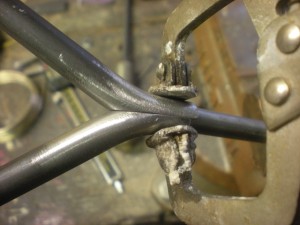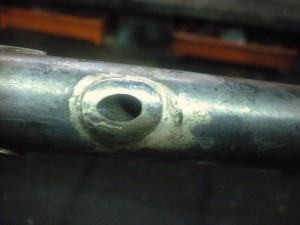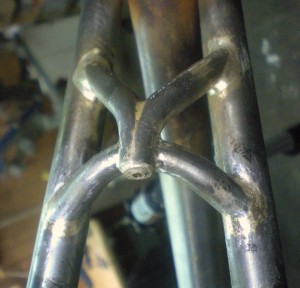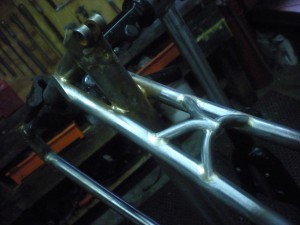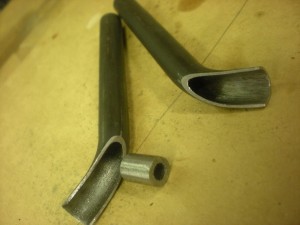
Now that the brass tubing is in place, work can begin on a suitable bridge. The trick here is to provide enough downward slope to minimize cable friction without sacrificing the structural integrity of the bridge. I decide on a "Y" shape. Two pieces of 3/8" tubing are bent to the correct angle and filed "open" to meet in the middle. The small cylinder is 5/16" rod that's been drilled to fit the brass tubing. It will be brazed into the shared bottom end of the bridge.
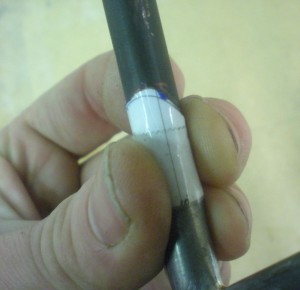
Then, to figure the miter to the seat stay. I eyeball the angle and intersect and plug the numbers into the "Tube Notcher" applet on Nova Cycles' website. This provides a very handy scale printout to cut out and trace onto the tubing.
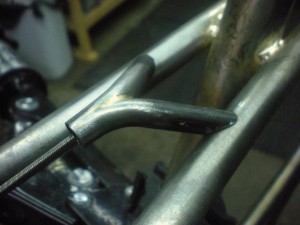 The miter is adjusted to an exact fit by extending the paper template past the end of the tube, and then cutting away any extra material to eliminate gaps. The “legs” are then cut to where the span between them is just slightly wider than the seat stays, and it’s a matter of mitering the legs incrementally shorter until the mites meet the stays.
The miter is adjusted to an exact fit by extending the paper template past the end of the tube, and then cutting away any extra material to eliminate gaps. The “legs” are then cut to where the span between them is just slightly wider than the seat stays, and it’s a matter of mitering the legs incrementally shorter until the mites meet the stays.

